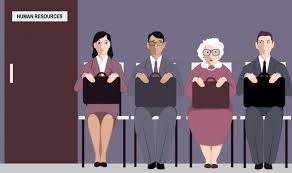 Getty images show advertising’s ageist stereotypes. A new report from AARP this week zeros in on something we all knew: Advertisers focus on the young – not unlike the tech firms who make products being advertised. Despite the 50+ population representing one third of the US population, they only show up in 13% of advertising imagery. The AARP report authors analyzed the Getty images – and observed that even though 69% of people aged 65-73 own a smartphone, less the 5% of the images of technology included any older adults. The same held true for images of workers: while one third (53 million) of the labor force is 50+, only 13% showed them working -- otherwise they were shown at home, with a partner or in a medical setting. And the kicker: 81% of the employees of advertising agencies are younger than 55 -- their ageism is well-documented.
Getty images show advertising’s ageist stereotypes. A new report from AARP this week zeros in on something we all knew: Advertisers focus on the young – not unlike the tech firms who make products being advertised. Despite the 50+ population representing one third of the US population, they only show up in 13% of advertising imagery. The AARP report authors analyzed the Getty images – and observed that even though 69% of people aged 65-73 own a smartphone, less the 5% of the images of technology included any older adults. The same held true for images of workers: while one third (53 million) of the labor force is 50+, only 13% showed them working -- otherwise they were shown at home, with a partner or in a medical setting. And the kicker: 81% of the employees of advertising agencies are younger than 55 -- their ageism is well-documented.
Does ad imagery explain why older people are largely ignored by Silicon Valley? If you work in a Silicon Valley tech company, the odds are that you are a millennial (20-33) -- hired at a rate that is not reflective of the working age population. What you are not is a boomer between the ages of 52-70 -- they are hired at a rate that is 60% less than their workforce representation. So naturally the older population doesn’t work in the companies that make the smartphones, tablets, and apps that at least 69% of them use. But vendors think this is okay -- with their view likely reinforced by the lack of visibility of older people, despite their wealth dominance, in advertising seen by these younger workers. And you know that most are not seeking older adults to help test the usability of devices.
Does age bias explain why tech firms do such a poor job of design? Let’s assume that older people don’t work there, including in the user experience and testing departments. Let’s also assume that the problems older adults may have with their products are poorly understood. Yet there are some organizations that want to get the attention of tech companies – by organizing groups of older people to provide feedback, creating product lines to help deal with the plethora of tech complexity in their homes, offering websites to demystify products that should not be mysterious, adding training to help older adults demystify the utility and poor usability of products.
The ultimate irony is to have to advertise when design works. Amazon has just created a designation for its smart home tech called Certified for Humans – attempting in a (mostly) non-condescending way to point out the obvious -- that technology, certainly most smart home tech, is NOT 'certified for humans' or out of the box even usable. Similarly, how much tech in your life preserved usable dials versus screen taps or buttons, the way airplane cockpits still must? Or have noticed that car dashboard tech so non-intuitive that it mandates a read of the manual? Nothing against manuals, but in this age of turning on a device and having it say “Hello!”, we may increasingly expect that all tech should be so welcoming. Sadly, a day spent setting up a smartphone (apps, preferences, undoing defaults, etc.) misses that expectation by a mile.

 Getty images show advertising’s ageist stereotypes. A new report from AARP this week zeros in on something we all knew:
Getty images show advertising’s ageist stereotypes. A new report from AARP this week zeros in on something we all knew: